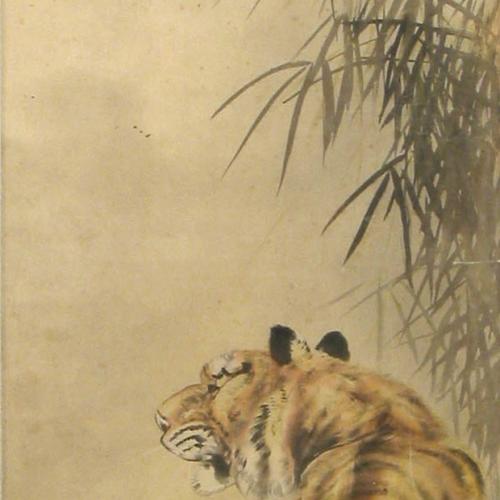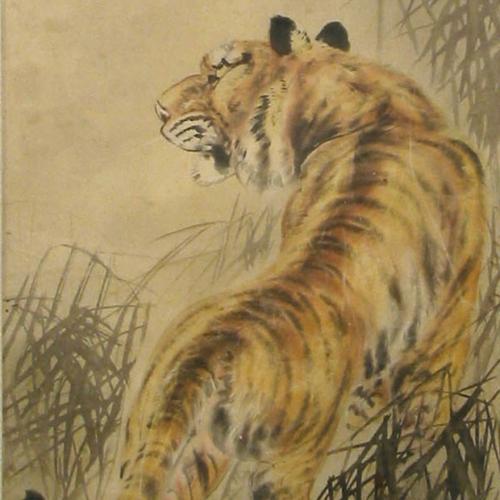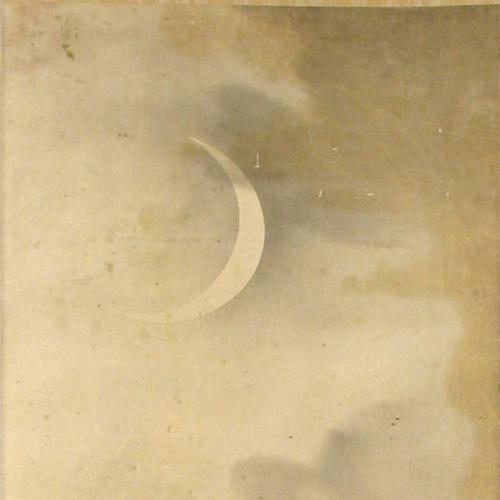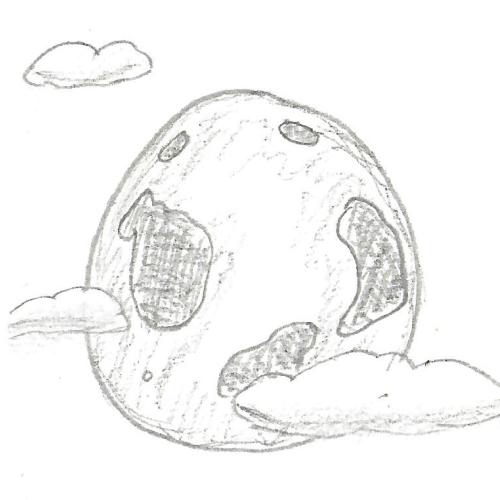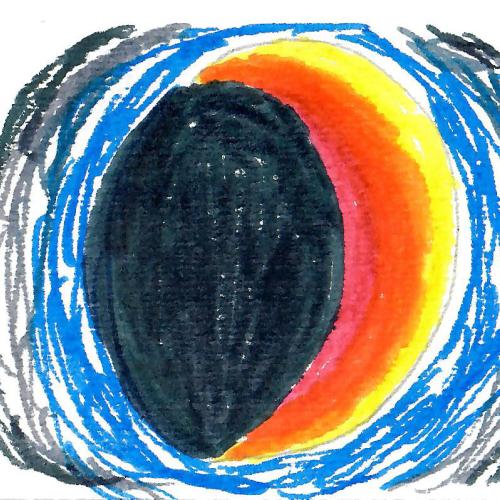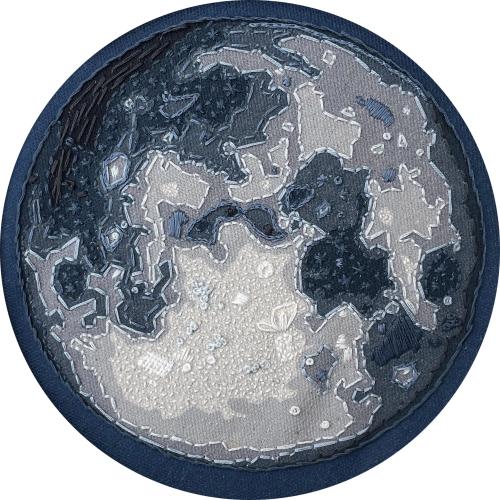UMFA in the Wild: Moon Viewing and Sketching
UMFA in the Wild is a program that aims to show how art and nature are intertwined. In the past, we met people in wild places around Utah to experience creating art with inspiration from nature. During this time of social isolation, we hope that you will still find inspiration in nature to create art as an individual or with your family.
The UMFA encourages you to go out and experience nature both through the great outdoors and through art. In this online activity, we will learn about the Asian tradition of Moon Viewing and get inspired by art depicting the moon and moonscapes. There are many ways to focus on a work of art—for this conversation we are going to look specifically at the depiction of the moon. Then experience your own moon viewing and draw a sketch of the moon or a moonscape with a variety of drawing materials.
Let’s look at some art!
Today we are looking at and sketching the moon! Artwork of the land is called a landscape, and the moon as seen from earth is part of the landscape. Sometimes a landscape with a moon is called a nightscape. What do you think a painting or drawing of the moon’s surface is called?
Find out when the moon will be visible where you are here.
And here is a moon phases calculator from NASA that you can cut out and put together yourself!
Looking at the moon is an ancient pastime that many people still practice. Have you ever looked at the moon? In many Asian cultures it is a fall festival. The Moon Festival has been celebrated for 3,000 years. It’s called Chuseck (autumn eve) in Korea, Zhong Oiu Jie (mooncake festival) in China, Tsukimi (moon-viewing) in Japan, and Tết Trung Thu (mid-autumn festival) in Vietnam. It usually happens between mid-September and early October when the moon is at its brightest and fullest.
But moon gazing is also a favorite of many artists. Look at his scene on a scroll by an unknown Korean artist. What phase of the moon did this artist depict? Why do you think they are showing a tiger walking under a moon? You can sketch the moon at different phases by keeping a moon journal every night. You might even see different animals around during different moon phases.
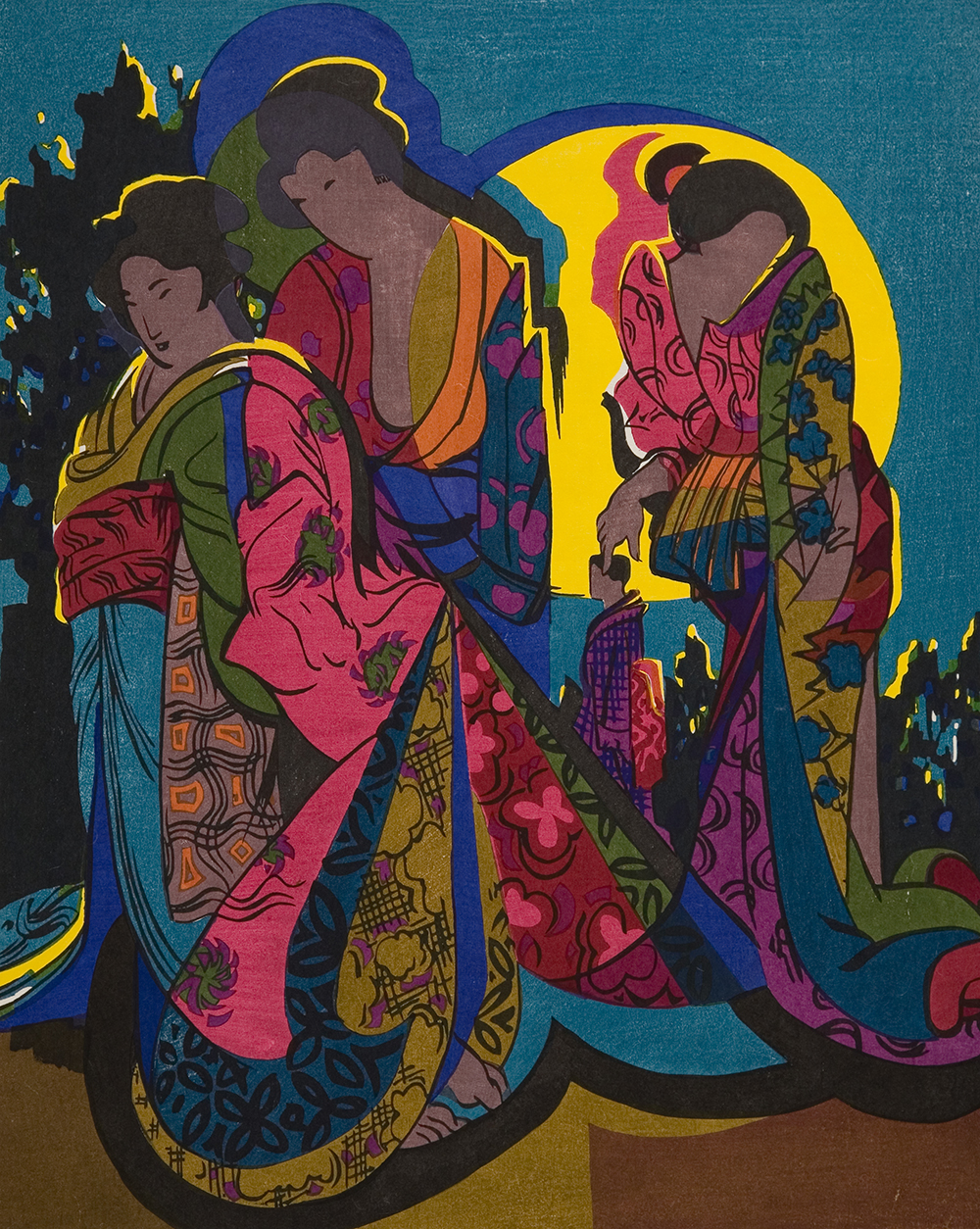
Although the moon festival started in Asia, it has influenced people all around the world. Now many people celebrate looking at the big harvest moon in the fall. This work of art by American artist Macdonald-Wright shows women participating in a moon-viewing party. He illustrated a famous poem by a Chinese poet Chiyo-ni. The title of the artwork is her poem!
Whatever we wear,
We look beautiful,
When moon-viewing.
– Haiku by Chiyo-ni (1703-1775 CE)
You can draw the moon as described in a poem as well. Find a poem or story about the moon and then draw how the author described it. Sometimes writers can give us a unique and different perspective that we never thought of.
You can write a poem or story about the moon too. Writing about the moon is almost as old as viewing and sketching it. What words will you use to describe the moon? How will you write the words on the page? Will you draw the moon to go with your words?
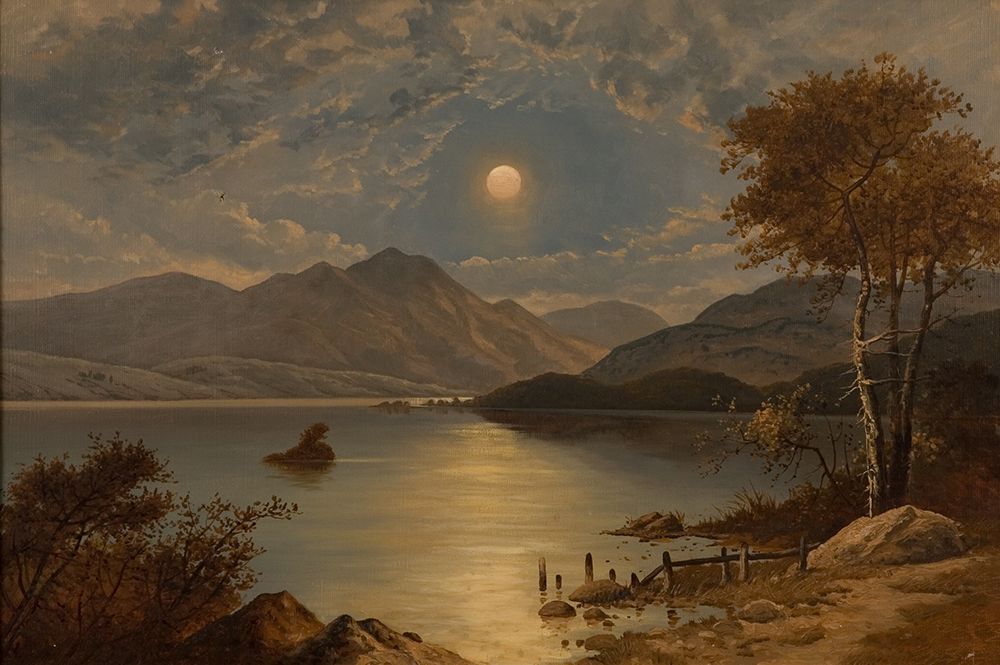
This landscape by Utah artist Alfred Lambourne is called a nightscape because it shows the landscape at night. Notice how the moon is right in the center and the focus of the whole painting. Lambourne shows the moon reflecting off of the clouds, water, and sky. Moonlight also affects the surroundings by changing their color. What do you think this painting would look like during the day? What colors would the water, trees, and mountains be?
As you view the moon, try drawing the landscape around you along with the moon. Pay close attention to what colors the ground, sky, and clouds are. What parts of the landscape reflect the moonlight?
Sketching the Moon
There are many ways to sketch the moon. As we have seen in some artwork from the UMFA, you can sketch a landscape with the moon in it, or different phases of the moon. You can also sketch just the moon and its maria, or dark areas. If you would rather write about the moon you can use words to sketch a picture of it. Remember to find out when the moon is visible by checking a calendar here.
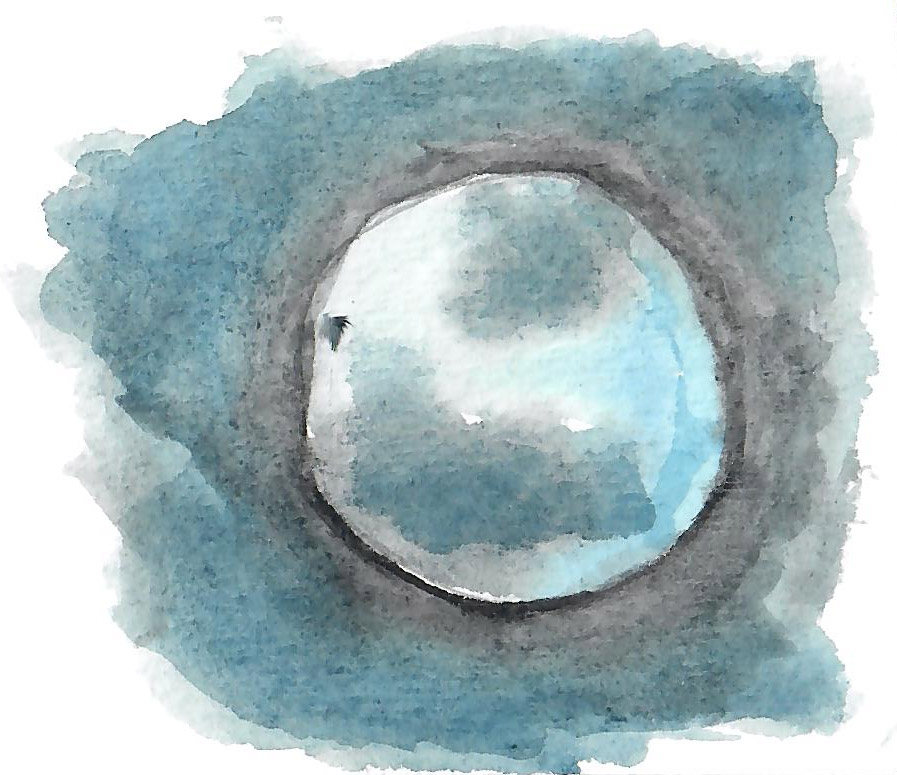
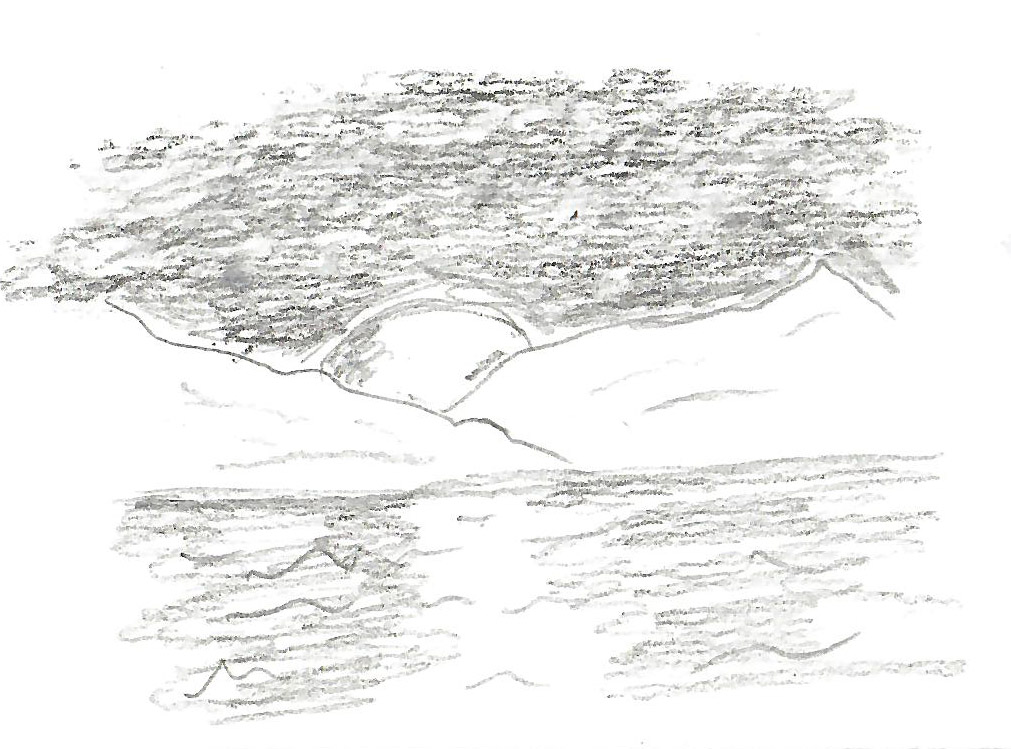
You also get to choose what you sketch with: pencils, markers, chalk, or paint are just a few ideas. You can even use embroidery and stitch the moon if you want. It is up to you. Here are a few pointers for sketching the moon:
- If you want to see details of the moon use binoculars (or a telescope if you can find one) to see it close up.
- Try mapping the landmarks of the moon. If you make a quick sketch of the maria you can use it as a reference when you do your final artwork.
- Think about how the moonlight affects the colors of the landscape. Do you notice how blue everything looks? If you are sketching a landscape try making your colors tinted more bluish.
- If you are writing a poem with a drawing of the moon, think about how your words can move around your drawing to give emphasis to the moon.
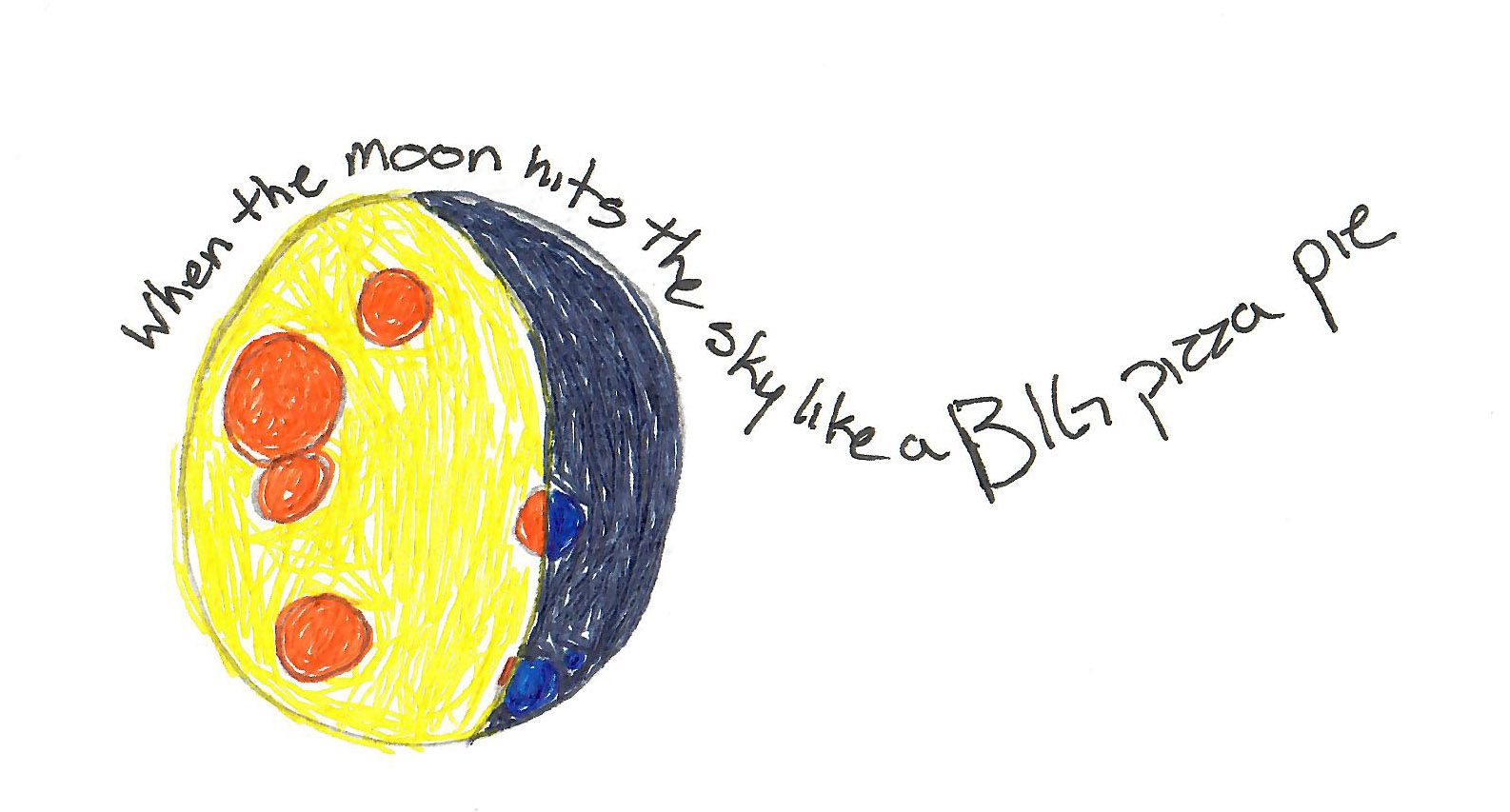
5. You can focus on one aspect of the moon you want to highlight and make your drawing simpler to show that aspect. For example, if you want to show the dark spots (maria), draw them in simple shapes. If you are interested in the color, don’t worry about drawing maria. If the phase interests you, focus on the shape of the moon.
6. You can use a protractor or compass to draw a perfect circle to make a full moon. But sometimes a hand-drawn circle can be just as beautiful.
Show us your moon! Tag us on Instagram or Facebook: #umfainthewild

